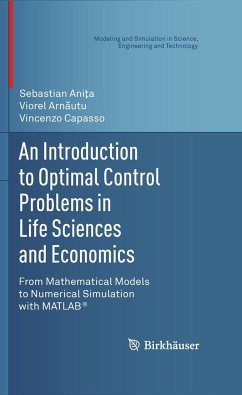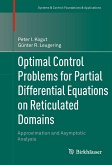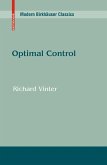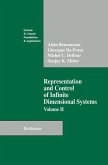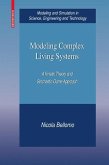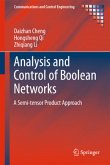Combining two important and growing areas of applied mathematics-control theory and modeling-this textbook introduces and builds on methods for simulating and tackling concrete problems in a variety of applied sciences.
Emphasizing "learning by doing," the authors focus on examples and applications to real-world problems. An elementary presentation of advanced concepts, proofs to introduce new concepts, and carefully presented MATLAB® programs guide the reader through methods in optimal control and related models. This approach not only fosters an understanding of the basic topics, but also leads the way to new, independent research.
With minimal prerequisites and exercises in each chapter, An Introduction to Optimal Control Problems in Life Sciences and Economics, serves as an excellent textbook for graduate and advanced undergraduate courses in mathematics, physics, engineering, computer science, as well as biology, biotechnology, economics, and finance. The work is also a useful reference for researchers and practitioners working with optimal control theory in the above areas.
Emphasizing "learning by doing," the authors focus on examples and applications to real-world problems. An elementary presentation of advanced concepts, proofs to introduce new concepts, and carefully presented MATLAB® programs guide the reader through methods in optimal control and related models. This approach not only fosters an understanding of the basic topics, but also leads the way to new, independent research.
With minimal prerequisites and exercises in each chapter, An Introduction to Optimal Control Problems in Life Sciences and Economics, serves as an excellent textbook for graduate and advanced undergraduate courses in mathematics, physics, engineering, computer science, as well as biology, biotechnology, economics, and finance. The work is also a useful reference for researchers and practitioners working with optimal control theory in the above areas.
"This is an interesting and useful textbook that introduces the reader to methods of optimal control through easily accessible exercises. It is possible to read the book with no knowledge of MATLAB and only some basic knowledge of calculus, which makes most parts truly accessible to undergraduate students." -- SIAM
From the reviews:
"This textbook for graduate students introduces the reader to the basic results and methods in optimal control and applies these methods to problems in life sciences and economics, using MATLAB. ... The book contains many figures and MATLAB programs ... . Each chapter is concluded with bibliographical notes and theoretical and MATLAB exercises. In a short appendix, basic results from functional analysis and ODEs are provided." (W. Huyer, Monatshefte für Mathematik, 2013)
"This is an interesting and useful textbook that introduces the reader to methods of optimal control through easily accessible exercises. It is possible to read the book with no knowledge of MATLAB and only some basic knowledge of calculus, which makes most parts truly accessible to undergraduate students." (Urszula Ledzewicz, SIAM Review, Vol. 53 (4), 2011)
"This book is a guide for those interested in solving real world optimal control problems, including both the theoretical analysis of their mathematical models and suitable computer programs for numerical simulation. The book is self-contained. ... An extensive reference list and an index are also included. The book is intended for graduate students and researchers in mathematics, biology, economics, engineering, and other fields." (Gheorghe Morosanu, Zentralblatt MATH, Vol. 1206, 2011)
[T]his is an interesting and useful textbook that introduces the reader to methods of optimal control through easily accessible exercises. It is possible to read the book with no knowledge of MATLAB and only some basic knowledge of calculus, which makes most parts truly accessible to undergraduate students. -SIAM
"This textbook for graduate students introduces the reader to the basic results and methods in optimal control and applies these methods to problems in life sciences and economics, using MATLAB. ... The book contains many figures and MATLAB programs ... . Each chapter is concluded with bibliographical notes and theoretical and MATLAB exercises. In a short appendix, basic results from functional analysis and ODEs are provided." (W. Huyer, Monatshefte für Mathematik, 2013)
"This is an interesting and useful textbook that introduces the reader to methods of optimal control through easily accessible exercises. It is possible to read the book with no knowledge of MATLAB and only some basic knowledge of calculus, which makes most parts truly accessible to undergraduate students." (Urszula Ledzewicz, SIAM Review, Vol. 53 (4), 2011)
"This book is a guide for those interested in solving real world optimal control problems, including both the theoretical analysis of their mathematical models and suitable computer programs for numerical simulation. The book is self-contained. ... An extensive reference list and an index are also included. The book is intended for graduate students and researchers in mathematics, biology, economics, engineering, and other fields." (Gheorghe Morosanu, Zentralblatt MATH, Vol. 1206, 2011)
[T]his is an interesting and useful textbook that introduces the reader to methods of optimal control through easily accessible exercises. It is possible to read the book with no knowledge of MATLAB and only some basic knowledge of calculus, which makes most parts truly accessible to undergraduate students. -SIAM

